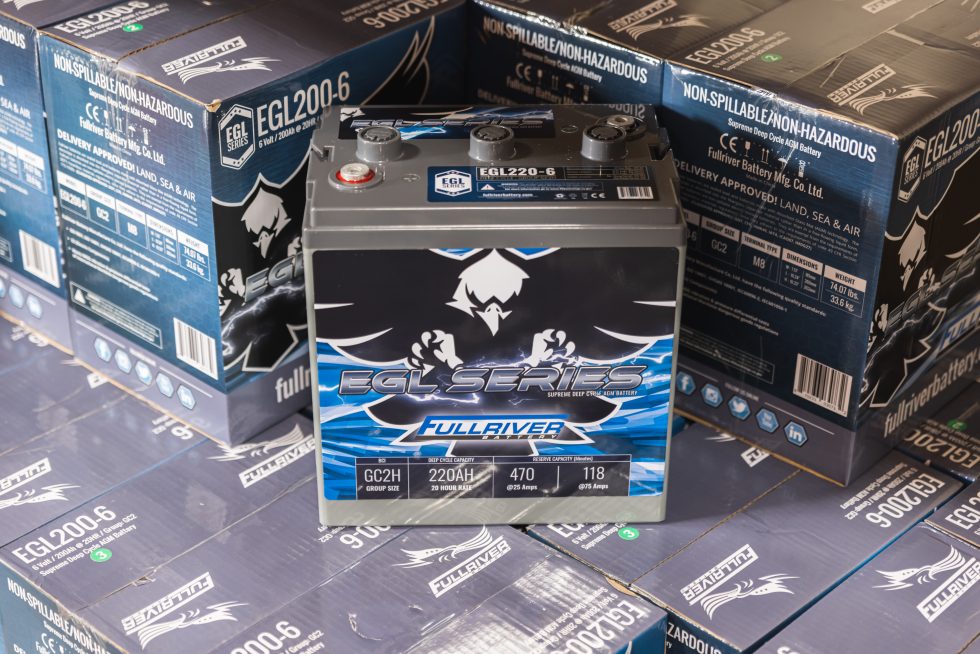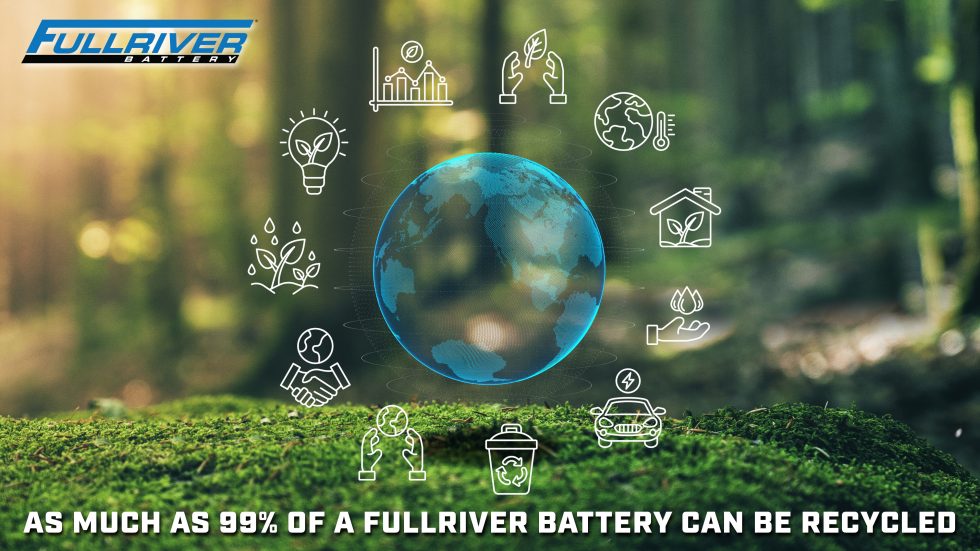By Aaron Plew – Product Director at Fullriver Battery USA
Feb, 2022
Fullriver believes at its core that lead-acid battery technology remains the most sustainable and reliable iteration of energy storage technology. Recently, much acclaim and ardor has surrounded lithium battery technology. At the same time, older battery technology has been dismissed out of hand as dying and irrelevant. So much so, that one of the largest golf cart manufacturers has switched entirely to lithium for their carts. According to Plato, knowledge is justified true belief. Today we will examine these technologies in terms of their reliability and sustainability to hopefully add knowledge to our belief.

Ease of Recycling-
Lithium: As it currently stands, lithium batteries are both very difficult to recycle and very expensive, with very few of the residual materials from this process able to be reused. Current estimates are around 15-20% of a lithium battery is reclaimable. It doesn’t require much insight to see what this means in the long-term, lots of landfill waste, and a constant quest to mine new materials from the earth.
Lead-Acid: It is well documented that one of the most recycled products is the lead-acid battery. Lead Acid battery recycling is one of the best examples of true circular economy. Very few products/materials outside maybe aluminum / steel are recycled at this level. Even everyday materials like paper, cardboard, and plastics have a long way to go to achieve a similar recycling success as lead batteries. Quite remarkable, as much as 99% of a lead-acid battery is recyclable. And not only is it readily recyclable, but a lead-acid battery is almost always recycled because of its inherent value. Lead-acid recycling is so valuable, a whole industry exists that continually seeks it out.

Consumption of Raw Materials-
Lithium: The raw materials in lithium batteries require intensive mining processes to obtain. Because much of these materials cannot be re-used, this mining will go on and on to satisfy the skyrocketing demand for lithium batteries.
Lead-Acid: To produce a lead-acid battery still requires mining of raw materials, this demand is held in check by the abundance of recycled materials used to make today’s batteries. Up to 80% of the lead in a new battery can be of recycled origin. It is possible that the lead in new batteries today in some part has been in use for a hundred years.
Energy Consumption-
Lithium: To produce a lithium battery it requires 450 kWh for every 1 kWh of capacity.
Lead-Acid: In stark contrast, it requires 150 kWh for every 1 kWh of capacity to produce a lead-acid battery.
Reliability-
Lithium: While the individual lithium cells themselves are very reliable, the layers of tiny electronic components like pcb’s, composed of diodes, resistors, and mosfets, are lithium’s pinch point. The failure of any one of these components, and it’s lights out for the battery. This is one reason that many mission-critical applications have not yet adopted lithium. Even Nasa still uses a very pricey lead-acid type battery to this day (silver-zinc). Murphy’s Law is alive and well.
Lead-Acid: A good analogy to understand the reliability of lead-acid batteries can be borrowed from the appliances of yesteryear. Major appliances like refrigerators and washing machines had much longer lives than their modern counterparts. Even buying a top-tier brand appliance today seems to have only a nominal impact on the reliability. In contrast, a lead-acid battery has no electronic components, it simply does not need them to do its job.

Life-
Lithium: In general lithium cells are advertised by their manufacturers to be capable of anywhere from 1000-2500 cycles at 100% DOD depending on the producer. While this accounts for individual cell performance, it does not take into account the overall pack reliability.
Lead-Acid: One of the oldest and mostly widely used battery technologies, great advancements are being made to increase the usable life of lead-acid batteries. New designs like the Fullriver EGL Series, cost 35-45% less than lithium batteries of comparable quality, while offering ~1,000 cycles at 100% DOD.
Cost-
Lithium: The cost of a lithium battery was one of its first barriers to adoption. But lithium proponents argued that scale would translate to lowered costs. The opposite is true. With giants like Tesla increasing production by 80% in 2022, the cost for raw materials has increased by 15-20% in January of 2022 alone.
Lead-Acid: While it cannot be said that lead has remained stable, compared to lithium it is relatively stable. A robust recycling sector helps to buffer much of the potential for instability in cost. The cost of a lead-acid battery of reputable quality (cheaper is available, but quality may be sacrificed) is 35-70% less than that of a lithium battery from a reputable producer.
When broken down side-by-side, the truth is, lead-acid batteries may experience some displacement, but they will continue to be a valuable player in the future of energy. Lead-acid batteries exhibit immediate real-world upsides in the here and now. Batteries like the Fullriver EGL Series demonstrate lead-acid’s constant improvement, promising at the very least, a multi-pronged approach to meeting the energy demand of the future in a safe, reliable, sustainable, and cost-effective manner.

